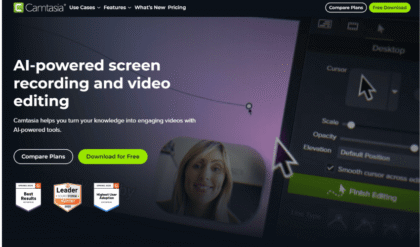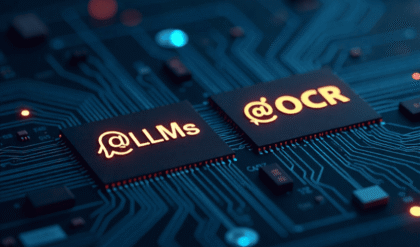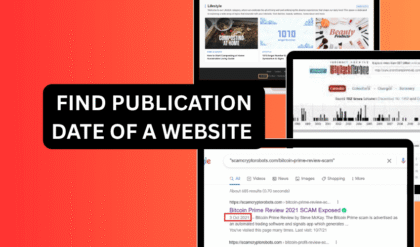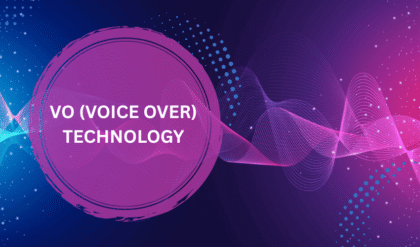Introduction
Telecom expense management software is a must-have for businesses looking to streamline their communications costs and improve their operations in an increasingly digital world.
In this comprehensive guide, we will discuss in detail the best telecom expense management software available in 2025, helping you make the right choice for your needs. Whether your business is small or large, controlling telecom expenses can lead to significant savings and improved efficiency.
What is Telecom Expense Management Software?
Imagine how headache-inducing it is to manage dozens of phone bills, data plans, and vendor contracts every month. Telecom expense management (TEM) software helps automate and simplify this process. Essentially, TEM software tracks, analyzes, and optimizes all telecom-related expenses, from mobile devices to cloud services and fixed lines. It helps identify overcharges, negotiate better contracts, and ensure compliance with company policies.
These tools have evolved significantly, incorporating AI for predictive analytics and integrating with other enterprise systems like ERP or IT service management platforms. For example, many tools now handle not only traditional telecoms, but also IoT devices and 5G networks, reflecting the shift toward connected everything. Businesses use TEM software to gain insight into spending patterns, automate invoice auditing, and forecast future costs. It’s not just about saving money; it’s about gaining strategic insights to make better decisions.
Benefits of Using Telecom Expense Management Software
Why bother with TEM software? Well, the perks are pretty compelling.
- Cost: Cost savings are huge companies often report reductions of 10-30% in telecom expenses by spotting billing errors and unused services.
- Automation: It automates tedious tasks like invoice processing, freeing up your team for more valuable work.
- Visibility: Enhanced visibility means you can track usage in real-time, preventing surprises at the end of the month.
- Security: Security and compliance also get a boost. With features like contract management and audit trails, you stay on top of regulatory requirements.
- Hybrid Model: In a hybrid work era, managing mobile expenses becomes seamless, ensuring employees have what they need without overspending.
- Scalability: Scalability is another win; as your business grows, the software adapts, handling more complex setups like multi-carrier environments.
Ultimately, TEM software turns a potential cost center into a strategic asset, driving efficiency and informed decision-making.
Top Telecom Expense Management Software in 2025
Based on recent reviews and market analyses, here are the standout telecom expense management software options for 2025. I’ve selected these based on user ratings, feature sets, and innovation, drawing from sources like Gartner, Capterra, and industry blogs. Each one offers unique strengths, so let’s break them down.
Tangoe
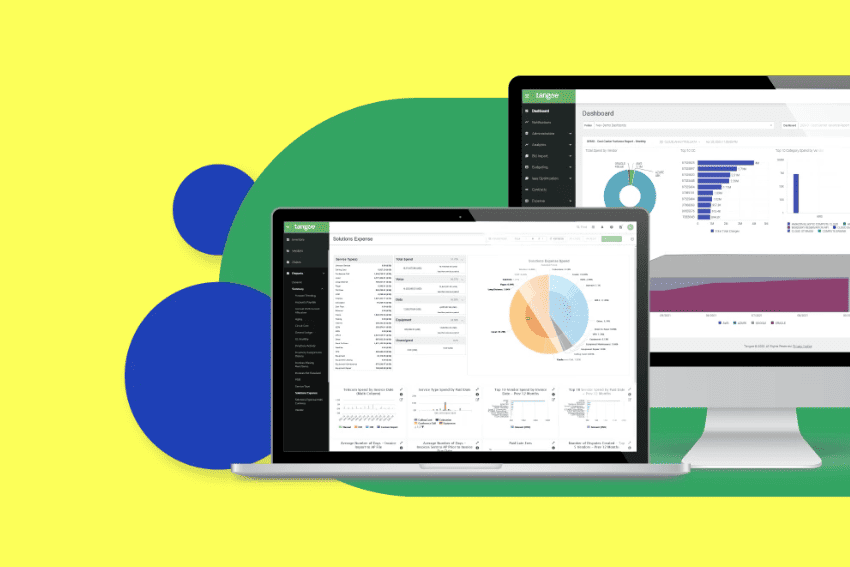
Tangoe leads the pack as comprehensive telecom expense management software, trusted by Fortune 500 companies for over two decades. It excels in AI-powered invoice processing and multi-carrier lifecycle management, covering telecom, mobile, cloud, and even IoT expenses. Key features include automated procure-to-pay workflows, advanced analytics for cost forecasting, and robust contract optimization tools that help negotiate better deals with vendors.
- Pros: Proven track record of delivering massive savings (up to $100 million annually for clients like UPS), enterprise-grade security, and seamless integrations with ERP systems. It’s highly scalable for global operations.
- Cons: Can be pricey for smaller businesses, and the initial setup might require some customization, leading to a steeper learning curve.
Tangoe’s strength lies in its end-to-end approach, making it ideal for large enterprises dealing with complex, multi-vendor environments. Users praise its ability to centralize all tech expenses into one dashboard, providing actionable insights that go beyond basic tracking. If you’re looking for a solution that evolves with emerging tech like 5G, Tangoe is a solid bet.
Calero
Calero, formerly Calero-MDSL, offers a unified platform that manages telecom, mobility, and SaaS expenses all in one place. With advanced analytics and reporting, it tracks over $20 billion in tech spend for thousands of customers worldwide. Features like device lifecycle management and contract/vendor optimization stand out, powered by cloud-based SaaS for easy access.
- Pros: Comprehensive coverage across tech categories, strong automation for invoice auditing, and scalability for mid-market to enterprise users. It’s particularly good for businesses with hybrid IT setups.
- Cons: The user interface could be more intuitive, and customer support sometimes lags in response times, according to reviews.
What makes Calero shine is its focus on innovation, think AI-driven insights for proactive cost control. It’s perfect for companies wanting to consolidate multiple expense streams without switching tools.
Sakon
Sakon provides AI-driven telecom expense management software with a strong emphasis on managed services and multi-cloud tracking. Its platform includes expense tracking, carrier relationship management, and advanced reporting, all tailored for enterprise needs.
- Pros: Excellent AI recommendations for cost reductions, extensive integrations with carriers and vendors, and a client-partnership model that includes consulting services.
- Cons: Steep learning curve for new users and occasional need for manual adjustments in complex scenarios.
Sakon’s modular approach allows customization, making it versatile for businesses with specific requirements like IoT management. It’s ranked highly for its proactive optimization, helping users stay ahead of rising costs.
Brightfin
Brightfin stands out with its native integration to ServiceNow, making it a go-to for IT expense management in telecom. Features include automated workflows, anomaly detection in spending, and financial forecasting based on historical data.
- Pros: Deep automation and seamless ServiceNow compatibility, which streamlines operations for heavy IT organizations. Customizable dashboards add to their appeal.
- Cons: Limited functionality outside ServiceNow environments and may require extra customization for niche use cases.
Ideal for enterprises already using ServiceNow, Brightfin turns telecom expenses into predictable, manageable elements, with strong forecasting tools that aid budgeting.
RadiusPoint
RadiusPoint’s ExpenseLogic platform powers telecom, mobility, and cloud expense management with real-time tracking and AI analytics. It offers robust reporting, alert systems for overages, and integrations with ERP systems.
- Pros: Strong cost optimization tools, excellent analytics, and real-time updates that prevent surprises. It’s user-friendly once set up.
- Cons: Initial learning curve and some manual intervention for invoice processing.
This software is great for businesses needing immediate visibility, with predictive insights that help forecast and reduce future expenses effectively.
WidePoint
WidePoint specializes in telecommunications lifecycle management, with a focus on government and enterprise sectors. Key features include centralized asset registries, automated procurement, and mobile device management.
- Pros: Tailored for secure environments, strong integrations with IT tools, and automation that saves time.
- Cons: Lacks a dedicated mobile app and can be overwhelming for smaller teams.
WidePoint’s strength is in its customized portals, making it a top choice for public sector needs where compliance is key.
Cass Information Systems
Cass offers enterprise-grade invoice validation and contract compliance with its TEM services. Features include robust reporting, customizable dashboards, and global carrier support.
- Pros: Excellent tracking of contract compliance and strong monitoring tools.
- Cons: Outdated UI compared to rivals and limited integration options.
It’s reliable for large enterprises focused on audit and compliance, delivering consistent cost controls.
Comparison of Top Telecom Expense Management Software
To help you decide, here’s a quick comparison table:
| Software | Key Strength | AI Integration | Best For |
|---|---|---|---|
| Tangoe | Multi-carrier Management | Yes | Large Enterprises |
| Calero | Unified Expense Tracking | Partial | Mid-Market to Enterprise |
| Sakon | AI-Driven Insights | Yes | Managed Services |
| Brightfin | ServiceNow Integration | No | IT-Centric Businesses |
| RadiusPoint | Real-Time Tracking | Yes | Cost Optimization |
| WidePoint | Lifecycle Management | No | Government/Enterprise |
| Cass | Invoice Validation | No | Compliance-Focused |
How to Choose the Best Telecom Expense Management Software
Picking the right telecom expense management software isn’t one-size-fits-all. Start by assessing your needs: Do you handle mostly mobile expenses, or is it a mix with cloud and IoT? Look for scalability if your business is growing.
Considering integration capabilities, does it play nicely with your existing ERP or CRM? AI features are a must for predictive analytics in 2025. Check user reviews for ease of use and support quality. Budget matters too; while many offer ROI through savings, upfront costs vary.
Test demos or trials to see the interface in action. Finally, think about future-proofing—opt for software that handles emerging tech like 5G. By aligning with your specific pain points, you’ll maximize value.
Conclusion
In today’s fast-paced business landscape, telecom expense management software isn’t a luxury, it’s a necessity for staying competitive. From Tangoe’s comprehensive platform to Sakon’s AI smarts, the options in 2025 offer powerful ways to tame costs and boost efficiency. Evaluate your requirements, compare features, and you’ll find a tool that pays for itself quickly. Ready to optimize? Dive into these top picks and transform your telecom spending.
FAQs
What is telecom expense management software?
It’s a tool that helps businesses track, analyze, and optimize telecom costs, including invoices, contracts, and usage.
How much can TEM software save for my business?
Typically, 10-30%, by identifying errors, unused services, and better negotiation opportunities.
Is AI important in TEM software?
Yes, AI provides predictive insights, automates auditing, and recommends cost reductions, as seen in tools like Sakon.
Can small businesses use TEM software?
Absolutely, some like Tangoe suit enterprises better; options like Genuity are more SMB-friendly.
How do I implement TEM software?
Start with a needs assessment, choose a vendor, integrate with existing systems, and train your team to offer support for onboarding.
